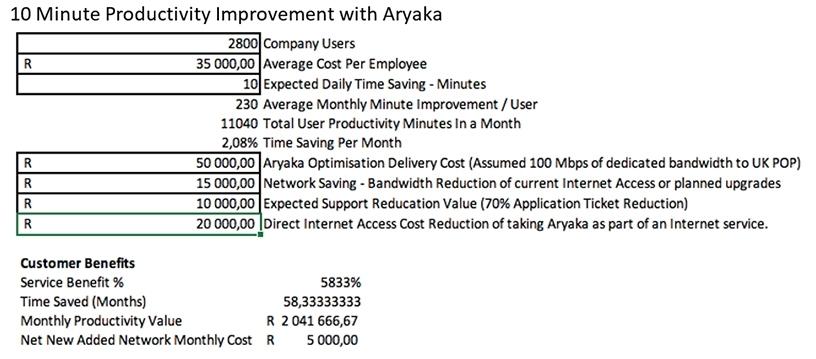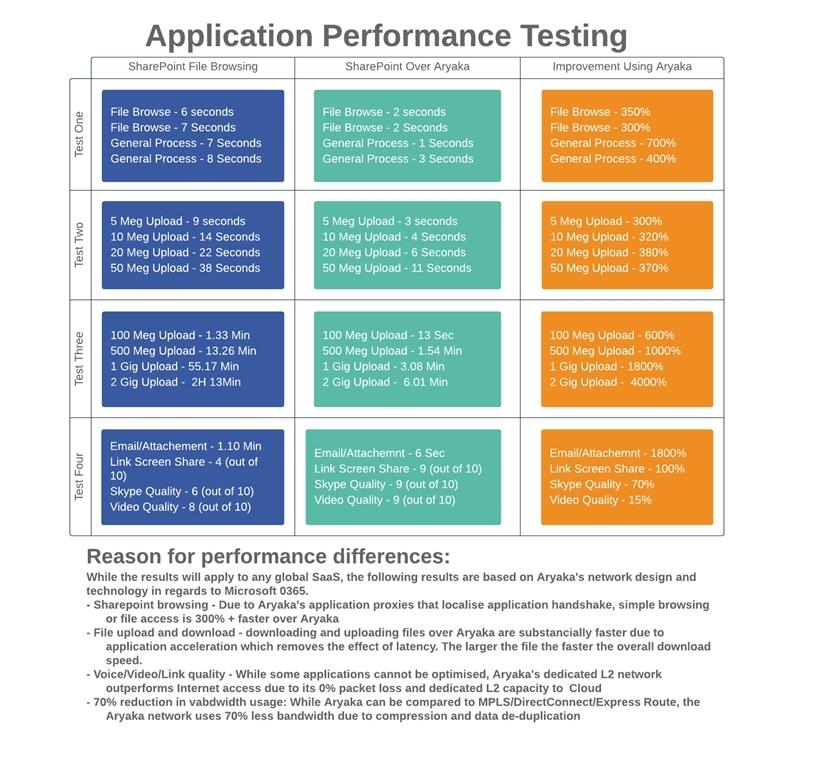
Global organisations are increasingly driven to justify moving to cloud computing on the basis of a total cost of ownership (TCO). A key consideration in this equation is the impact on employee productivity, often anticipated to be negative due to the introduction of distance (latency) to cloud services hosted overseas.
For businesses with hundreds, or even thousands, of users, the impact on employee productivity is often the most significant financial consideration working against cloud adoption. Application delays, even those that result in losses of just a few minutes per user per day, quickly add up in terms of financial losses to the business.
An example of this issue can be explained in a recent productivity calculation done for a South African retail organisation that has moved its applications into Microsoft 0365 and Azure. While it is happy with the overall move to Microsoft both technically and commercially, users quickly started complaining about the delays and frustration in using key applications.
It quickly became incumbent on the project team to quantify the cost of these anecdotal complaints. While it's difficult to measure staff happiness, the team started with a straightforward measure: calculating the loss of time due to newly introduced application delays. By timing the delay of key processes and aggregating user stories, a conservative "cost in time per user" was established at 12 minutes per user per day.
While 12 minutes may not appear to be an insurmountable problem, the total cost to company from lost productivity is clearly significant over a large enough user group.
The high-level view of the calculation is shown below:

The result is clear: with an additional 12 minutes of delay in business processes or productivity at a user level, this organisation is losing more or less R2.5 million per month in productivity.
The main reason for productivity loss in this case is slower application performance due to the adoption of globally centralised applications such as Microsoft O365, AWS, SalesForce, MS Dynamics, SAP, Oracle, etc.
As important as identifying the issue and the cost of lost productivity is understanding how it can be resolved, and at what cost.
As a company that focuses on improving application delivery, Accelerate SP sometimes finds it difficult to convince decision-makers to consider a solution that introduces new (often unbudgeted) costs into the network. While application improvements are almost universally acknowledged, failure to undertake a full cost/benefit analysis often leads to an oversight regarding productivity value.
In this case, the introduction of a cloud acceleration network (achieved here through the implementation of Aryaka) was clearly shown to successfully improve application delivery, thereby reducing user 'wait times' by a minimum of 10 minutes per user per day.
The full 'cost' of the implementation was therefore evaluated based on the numbers below:
Ten-minute productivity improvement with Aryaka

As a complete OTT (over-the-top) service, a fast and fully optimised cloud acceleration network in this example would cost an organisation R50 000 per month.
In addition, in more than 75% of Accelerate SP's TCO analyses, the cost of implementing Aryaka was lower than their current network services for cloud, while performing at more than 10x faster on average.

Share